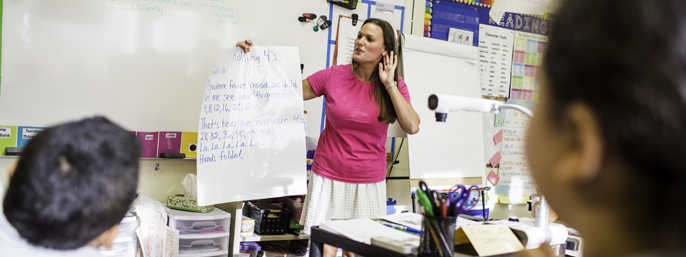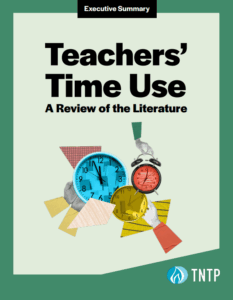Courtney Walker is the Principal of Aspire ERES Academy in Oakland, California. ERES Academy is part of the Aspire network of charter schools that operates in California and Tennessee.
Some people may have the impression that being a teacher means having a great schedule and built-in work/life balance—school breaks and summers off! However, that is an outdated and inaccurate description of the modern educational environment.
Many teachers often work 10+ hours a day. They contact families in the evenings, they lesson plan on weekends, and they look forward to school breaks, which allow them to get more work done and make time for important professional development opportunities. In addition to daily lesson planning and teaching, dedicated educators continually reflect, fine-tune their practice, examine data and look for new strategies to reach their students. If that sounds like a lot, that’s because it is. So, where does work/life balance fit in? Does it ever? What can we do to encourage and support teachers to balance their determined commitment to students with a commitment to their own well-being, so they can be career educators?
As a principal, teacher sustainability is constantly on my mind. At my school, we work relentlessly to hire, train, and retain highly effective teachers. We also are faced with a unique set of challenges in California. First, school funding is a big issue. Other states, like New York, get about double the funding per-student than we do in the Bay Area and across California. Lower school funding dramatically affects teacher salaries—as well as access to books, technology and facilities, all of which affect the quality of teachers’ work lives (and their stress levels).
Secondly, the housing market in the Bay Area—San Francisco in particular—is at a record high, and apartments and homes are often priced higher than New York City rates. Attracting and keeping competitive talent with limited resources to support adequate housing is extremely difficult.
Despite these obstacles, ERES Academy has taken a number of measures to do what we can with what we have in order to support teacher and staff sustainability.
This year, we instituted building hours from 7 a.m. to 6 p.m., to discourage teachers from coming in extremely early or staying very late. We also require that all teachers provide “emergency substitute plans” so if they are sick or unexpectedly absent, they don’t have to spend a lot of time preparing for a guest teacher. Due to curricula and assessment changes that came with the new Common Core Standards, we have added several “minimum days” to our calendar, where students are dismissed at noon, allowing the afternoons for teacher planning, collaboration, and analysis of the new assessments.
To alleviate some of the administrative duties associated with being a classroom teacher, our school—like all schools in our network—leverage our business manager and office assistants to help with contacting families, setting up meetings and translating communication. We also have a robust parent volunteer system, with many families helping create and maintain classroom materials and our environment.
At our charter network, we also encourage career longevity through a competitive salary schedule that increases as teachers stay longer and become more effective. Teacher effectiveness is measured based on a combination of student growth data, observational data, and peer, family and student surveys. As teachers become more effective, they are eligible to take on leadership roles, such as conducting professional development and training. These roles are an avenue for input and ownership in school and network decision-making and the added responsibility is rewarded with a stipend. We also publicly celebrate teachers and staff members who have devoted years of their lives to the school in network-wide meetings and gatherings.
In addition to our current efforts, I am always considering new ideas to further promote sustainability among my teachers, with the hopes of increasing retention. One idea is to put a cap on email hours outside of building hours to encourage efficiency during the school day and discourage the perceived “never-ending” work day. Another is to provide classroom teachers with one morning to come in late or one afternoon to leave early, allowing for activities or appointments that often cannot be completed outside of normal school hours.
Of course, there still remain many unanswered challenges ahead. Because truly effective teachers must be incredibly dedicated and willing to put in extra time and effort, sustainability is constantly in jeopardy. Right now, our teaching staff is primarily young, with an average of four years of teaching experience. How do we keep them around when they want to start families? In addition, in our network—as in many charter networks—great teachers often transition into administrative leadership roles quickly. How do we balance creating and developing leaders while keeping great teachers in the classroom?
Nationwide, teacher attrition costs the U.S. billions of dollars each year. It is important that school leaders and policy makers keep these questions in mind. However, achieving sustainability in the teaching profession does more for a school than simply saving its bottom line. It helps keep our best teachers in the classroom and protect the institutional knowledge veteran staff members hold in any company or industry. Everyone knows that the best teachers are influential inside and outside of the classroom. They make everyone around them better. They also help build trust and foster a true sense of community. We all must do what we can to avoid losing pivotal members of our community year after year.








